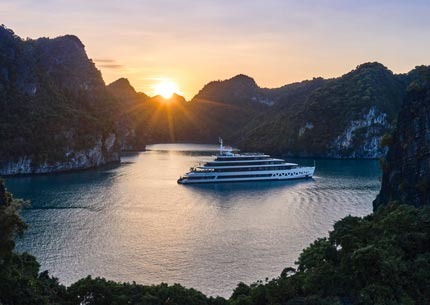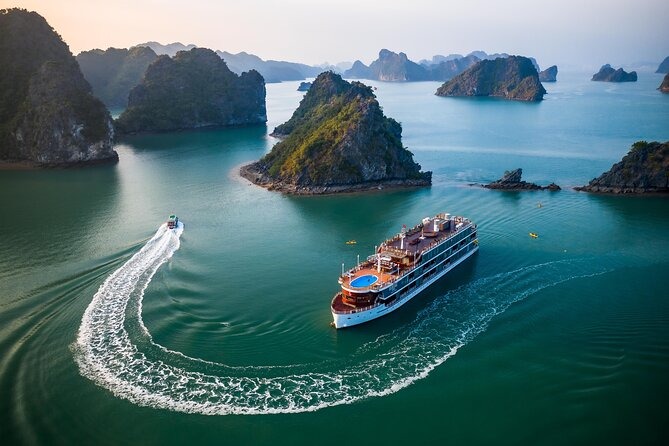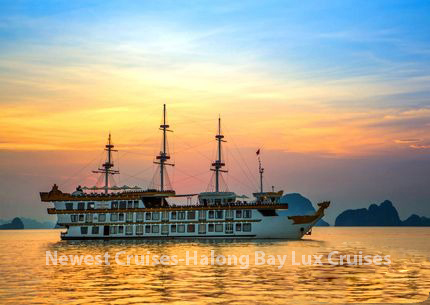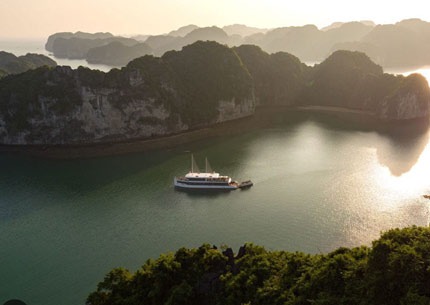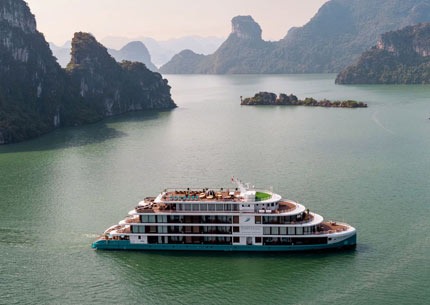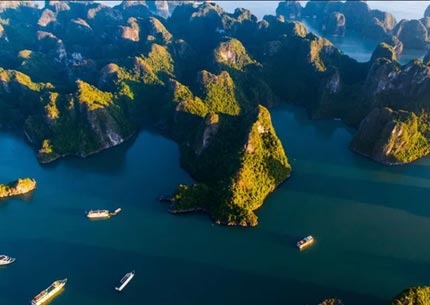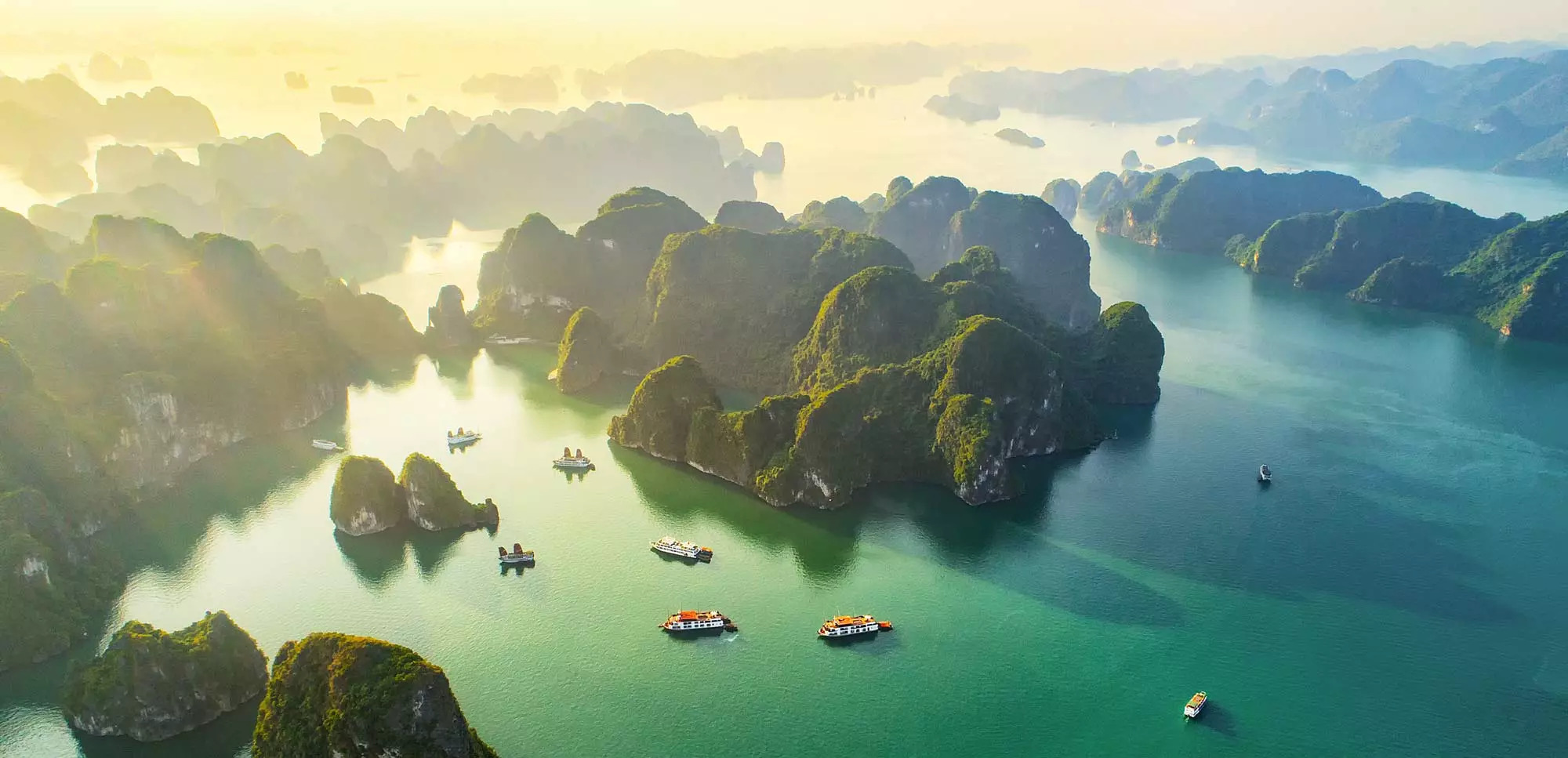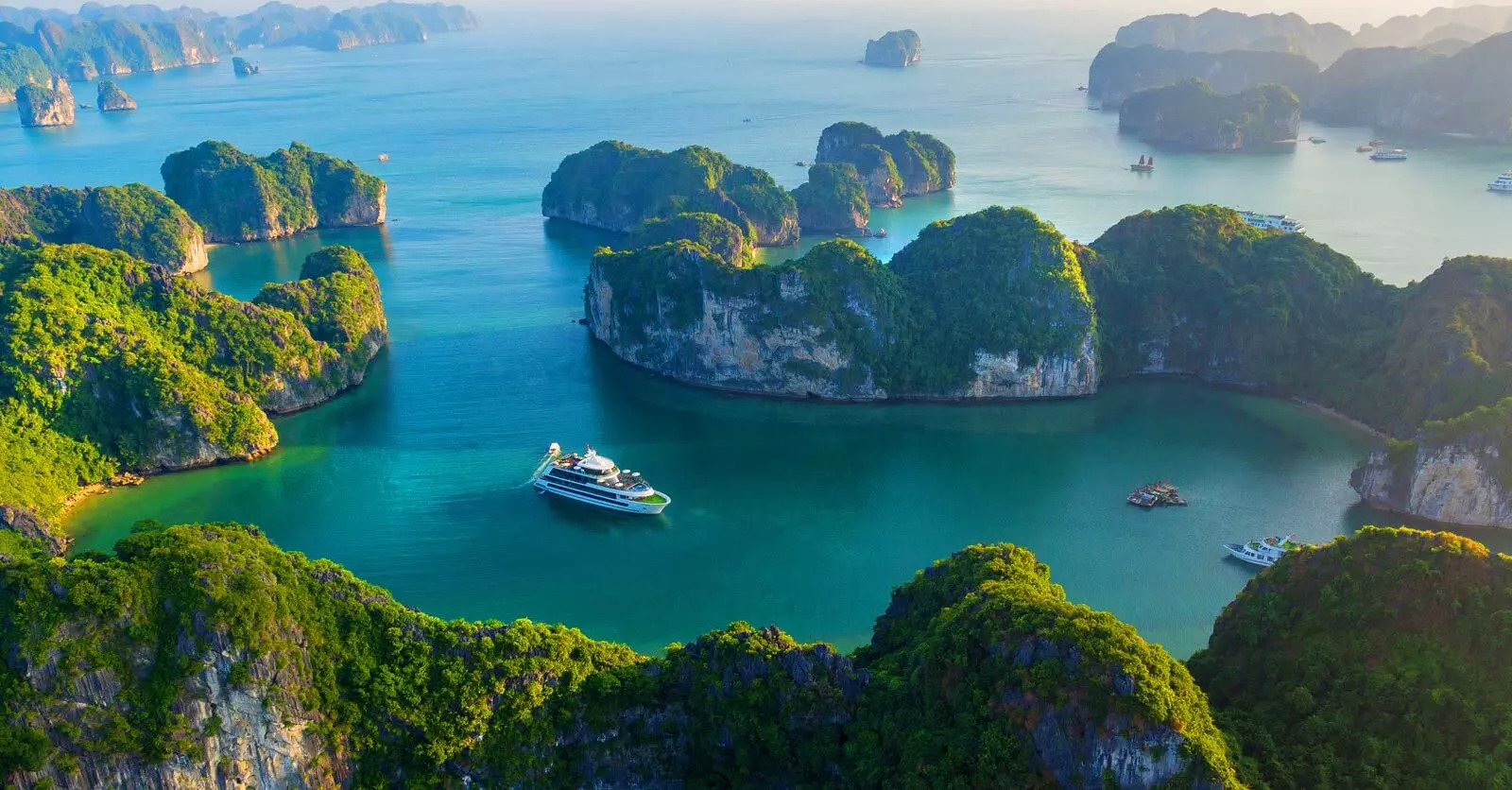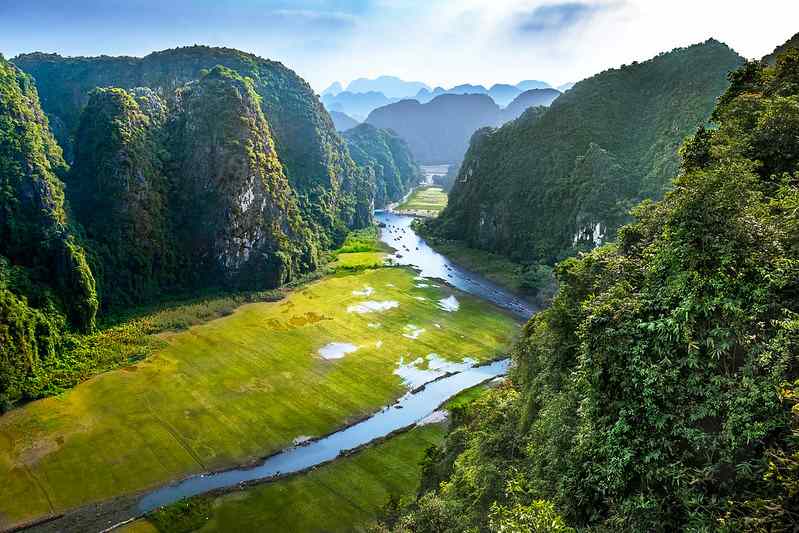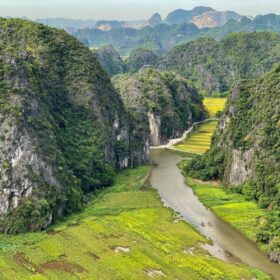Best Time to Visit Sapa in 2025/26: Complete Weather Guide & Seasonal Highlights
Perched among Vietnam’s northern highlands, Sapa captivates travelers with its emerald rice terraces, vibrant ethnic cultures, and spectacular mountain vistas. Timing your visit can make all the difference between witnessing golden harvest fields or misty winter landscapes. This comprehensive guide explores the best time to visit Sapa in 2025, breaking down weather patterns, seasonal activities, and essential packing tips to ensure your highland adventure exceeds expectations.
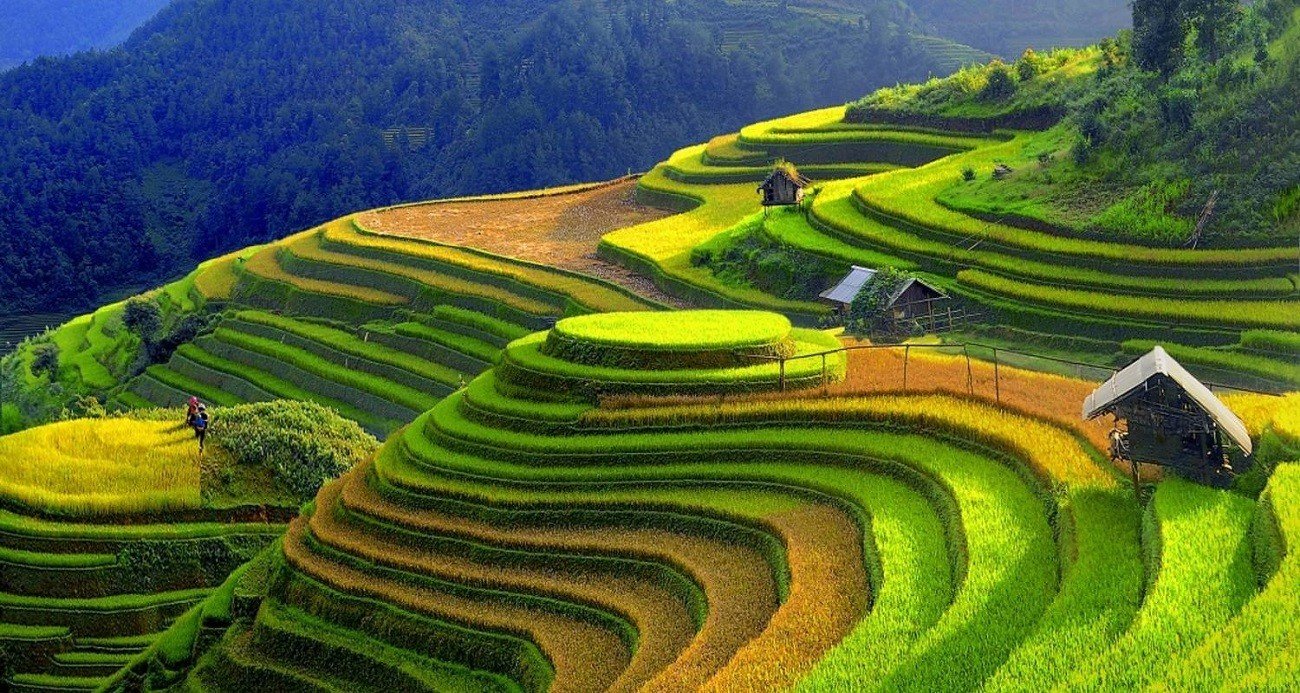
Understanding Sapa’s Unique Climate and Best Time to Visit Sapa in 2025/26
Sapa’s location at 1,600 meters above sea level creates a distinct climate that differs dramatically from Vietnam’s tropical lowlands. The region experiences four well-defined seasons, each offering its own spectacular scenery and cultural experiences.
Spring (March-May): The Season of Renewal
Weather conditions: Temperatures range pleasantly between 15°C to 25°C (59°F to 77°F) with gradually increasing humidity. Expect occasional light rain showers that clear quickly, revealing stunning mountain views.
Spring transforms Sapa into a colorful paradise as peach, plum, and cherry blossoms paint the hillsides in delicate pinks and whites. By May, local farmers begin preparing their terraced fields for the upcoming planting season, creating mesmerizing mirror-like landscapes as water fills the paddies.
Highlights of visiting in spring:
- Witness spectacular flower blooms across the highlands
- Enjoy comfortable hiking temperatures with clear visibility
- Experience unique cultural festivals like the Bai Tram celebration
- Photograph water-filled terraces reflecting the sky before rice planting
Spring offers the perfect balance of pleasant weather and natural beauty without peak-season crowds. If you’re a photography enthusiast or seeking authentic cultural experiences, mid-March to early May provides ideal conditions.
Summer (June-August): Vibrant Greenery & Dramatic Skies
Weather conditions: Temperatures climb to 20°C-30°C (68°F-86°F) with increased humidity. July and August bring the highest rainfall of the year, with afternoon downpours common but typically brief.
Summer transforms Sapa’s landscapes into a lush green paradise as newly planted rice spreads across the terraced fields. The mountains burst with vegetation, waterfalls reach their most dramatic flow, and the countryside radiates with life.
Highlights of visiting in summer:
- Marvel at intensely green rice paddies at their most vibrant stage
- Experience powerful waterfalls at maximum volume
- Enjoy cooler mountain temperatures compared to Vietnam’s lowlands
- Take advantage of summer discounts at many accommodations
For budget travelers and those seeking to escape Vietnam’s summer heat, Sapa offers a refreshing alternative. Just be prepared for occasional travel disruptions during heavy rainfall, particularly on trekking routes to remote villages.
Fall (September-November): The Golden Season
Weather conditions: Temperatures become increasingly pleasant, ranging from 10°C to 25°C (50°F to 77°F). Rainfall decreases significantly, skies clear, and humidity drops to comfortable levels.
Fall earns its reputation as the best time to visit Sapa for good reason. September and October transform the rice terraces into cascading golden staircases climbing the mountainsides. The harvest season brings vibrant activity to local villages as ethnic minorities gather their crops using traditional methods passed down for generations.
Highlights of visiting in fall:
- Witness the legendary golden rice terraces at their photogenic peak
- Experience perfect trekking conditions with dry trails and clear skies
- Enjoy comfortable temperatures for extended outdoor activities
- Participate in harvest festivals and celebrations
September stands out as the single best month to visit Sapa in 2025, offering the perfect combination of stunning landscapes, ideal weather, and authentic cultural experiences. Book accommodations well in advance, as this prime season attracts visitors from around the world.
Winter (December-February): Misty Mountains & Possible Snow
Weather conditions: Temperatures drop significantly to 0°C-12°C (32°F-54°F), with occasional dips below freezing at higher elevations. Expect misty mornings, clear afternoons, and the possibility of frost or snow on Fansipan peak.
Winter reveals a dramatically different side of Sapa. Mist frequently shrouds the mountains, creating an ethereal atmosphere that transforms familiar landscapes into mysterious, dreamlike scenes. On rare occasions, snowfall dusts the region, turning Sapa into Vietnam’s winter wonderland.
Highlights of visiting in winter:
- Experience the magical phenomenon of frost or snow (particularly in late December and January)
- Enjoy crystal-clear visibility on sunny days with spectacular mountain views
- Participate in unique Tet Holiday celebrations (Vietnamese Lunar New Year)
- Savor warming local specialties like thang co stew and regional hotpots
Winter appeals particularly to photographers seeking mystical landscapes and travelers who enjoy experiencing local holiday traditions. The season offers significantly lower accommodation rates outside of the Tet holiday period.
Essential Packing Guide for Sapa in 2025/26
Packing appropriately for Sapa’s variable climate ensures your comfort throughout your journey. Here’s a comprehensive seasonal packing list:
Spring Essentials (March-May)
- Clothing: Lightweight, moisture-wicking layers that can be added or removed as temperatures fluctuate
- Footwear: Sturdy hiking shoes with good traction for potentially muddy trails
- Protection: Light rain jacket, sun hat, sunglasses, and sunscreen (UV intensity increases with altitude)
- Accessories: Small daypack, reusable water bottle, and light scarf for temple visits
Summer Must-Haves (June-August)
- Clothing: Quick-dry shirts and pants, lightweight rain gear
- Footwear: Waterproof hiking shoes or sandals with secure straps
- Protection: High-quality rain jacket or poncho, insect repellent
- Accessories: Waterproof covers for backpacks and electronics, microfiber towel
Fall Necessities (September-November)
- Clothing: Layered outfits with light sweaters or fleeces for evening temperature drops
- Footwear: Comfortable trekking shoes with ankle support
- Protection: Light jacket, sun protection
- Accessories: Camera equipment for capturing golden terraces, binoculars for distant views
Winter Requirements (December-February)
- Clothing: Thermal base layers, warm mid-layers, insulated jacket
- Footwear: Insulated, waterproof boots with good traction
- Protection: Warm hat, gloves, scarf, and moisturizer for dry mountain air
- Accessories: Thermos for hot drinks, hand warmers for early morning treks
Pro Tip: Regardless of season, bring a lightweight, packable down jacket for Sapa’s unpredictable mountain weather. Evening temperatures can drop significantly even during warmer months.
Top 10 Seasonal Activities in Sapa for 2025/26
Sapa offers diverse experiences throughout the year. Here are the top activities based on seasonal conditions:
1. Explore Golden Rice Terraces (September-October)
The iconic terraced fields of Muong Hoa Valley reach their golden peak in early fall, creating the postcard-perfect landscapes Sapa is famous for. Take a guided trek through Y Linh Ho and Lao Chai villages to witness local farmers harvesting their crops using traditional methods.
2. Summit Fansipan Peak (April-May or September-October)
Challenge yourself to climb the “Roof of Indochina” during the clearest months. For a less strenuous experience, take the cable car to enjoy spectacular panoramic views of the surrounding mountains extending into China.
3. Experience Ethnic Village Homestays (Year-round)
Immerse yourself in local culture by staying with H’mong, Red Dao, or Tay families. Each season offers a different glimpse into their daily lives, from spring planting to winter crafting sessions around the fire.
4. Photograph Misty Landscapes (December-February)
Winter mornings transform Sapa into a photographer’s dream as mist weaves between mountains and valleys. Capture ethereal scenes from vantage points like Ham Rong Mountain or Tram Ton Pass.
5. Trek to Remote Waterfalls (June-August)
Visit Silver Waterfall and Love Waterfall during summer when they’re at their most dramatic flow. The surrounding forests burst with lush vegetation, creating stunning natural settings.
6. Attend Local Markets (Year-round, weekend markets most vibrant)
Sapa’s colorful markets showcase the region’s incredible cultural diversity. Don’t miss the Sunday Bac Ha Market (97km from Sapa) where flower H’mong people gather in their vibrant traditional attire.
7. Witness Cherry Blossoms (January-February)
Early in the year, cherry blossoms create pink canopies throughout Sapa town and surrounding areas, offering a unique perspective on this northern Vietnamese destination.
8. Cycle Through Valleys (March-May or September-November)
Rent a mountain bike during the drier months to explore Sapa’s stunning valleys and villages at your own pace, with less humidity and more comfortable temperatures.
9. Participate in Harvest Festivals (September-October)
Join local ethnic minorities as they celebrate the rice harvest with traditional music, dance, and rice wine ceremonies—an authentic cultural experience few tourists witness.
10. Experience Potential Snowfall (December-January)
For a truly unique Vietnamese experience, visit during late December or January when Sapa occasionally receives snowfall—a rare phenomenon in Southeast Asia.
Insider Tips for Visiting Sapa in 2025/26
Transportation Recommendations
The journey to Sapa is part of the adventure. For an unforgettable experience, consider taking the overnight train from Hanoi to Lao Cai, followed by a one-hour transfer to Sapa. This route offers beautiful scenery and a chance to rest before arriving in the highlands.
For a more direct option, luxury cruises often offer package tours that include transportation to Sapa after your Halong Bay experience, allowing you to combine Vietnam’s most spectacular landscapes in one seamless journey.
Accommodation Insights
Book accommodations at least 2-3 months in advance for visits during September-October (peak season) and around Tet Holiday (late January/early February 2025). For an authentic experience, consider homestays in villages like Ta Van or Cat Cat, where you’ll connect directly with local cultures.
For travelers seeking comfort after trekking, Sapa town offers excellent hotels with mountain views and modern amenities. Many visitors combine a few nights in town with a village homestay experience.
Cultural Etiquette
When visiting ethnic minority villages, observe these important customs:
- Ask permission before photographing local people
- Remove shoes when entering homes
- Bring small gifts like tea or school supplies rather than money if staying with families
- Dress modestly, especially when visiting homes or markets
Safety Considerations for 2025/26
- Download offline maps of trekking routes as cellular service can be inconsistent
- Hire local guides for treks beyond main tourist areas—they provide cultural insights while supporting the local economy
- Check weather forecasts daily during rainy season (June-August) as landslides can affect certain routes
- Register your stay with local authorities if venturing to remote areas
Combining Sapa with Other Vietnamese Destinations
For the ultimate northern Vietnam experience, consider combining your Sapa adventure with these complementary destinations:
Halong Bay: Mountains Meet Ocean
After exploring Sapa’s mountains, experience Vietnam’s most famous seascape aboard a 3-day 5-star Lan Ha Bay and Halong Bay cruise. The contrasting landscapes create a perfectly balanced Vietnam itinerary.
A typical 10-day northern Vietnam itinerary might include:
- 3 days in Hanoi
- 2-3 days in Sapa
- 2 days exploring Halong Bay and Lan Ha Bay
- 2 days in Ninh Binh’s limestone karst landscapes
Mai Chau: A Less-Touristed Alternative
If visiting during Sapa’s peak periods (September-October), consider the nearby Mai Chau Valley as a less crowded alternative with similar stunning rice terraces and ethnic minority villages.
FAQs About Visiting Sapa in 2025/26
When is the absolute best time to see Sapa’s famous rice terraces?
The golden rice terraces reach their peak beauty in mid-September to early October 2025. This period offers the perfect combination of golden landscapes, clear skies, and comfortable temperatures for photography and trekking.
Will I see snow if I visit Sapa in January 2025/26?
While snowfall isn’t guaranteed, January offers the highest probability of experiencing snow in Sapa, particularly at higher elevations like Fansipan peak. Even without snow, winter brings beautiful misty landscapes and fewer tourists.
Is Sapa suitable for families with young children?
Absolutely! While some trekking routes are challenging, many attractions are family-friendly. Cat Cat Village, Ham Rong Mountain, and Sapa town itself offer accessible experiences for all ages. Consider the cable car to Fansipan for spectacular views without difficult hiking.
How many days should I spend in Sapa?
A minimum of 3 days allows you to experience Sapa’s highlights, including village treks and local markets. For a deeper experience including more remote areas, plan for 4-5 days. This gives you time to adjust to the altitude and account for potential weather changes.
Is it possible to visit Sapa as a day trip from Hanoi?
While technically possible, it’s not recommended. The journey takes 5-6 hours each way, leaving little time to experience Sapa’s beauty. At minimum, plan for an overnight stay, though 2-3 nights is significantly better.
Conclusion: Making the Most of Your Best Time to Visit Sapa in 2025/26
Each season transforms Sapa into a different world—from the flower-filled spring and lush summer to the golden autumn and misty winter. While September and October offer the most iconic experiences with perfect weather and golden rice terraces, every season has unique advantages for different types of travelers.
For photographers seeking the perfect shot, budget travelers looking for deals, adventure seekers wanting clear trekking conditions, or cultural enthusiasts hoping to experience local festivals, Sapa rewards visitors year-round with unforgettable experiences.
As you plan your 2025 Vietnam adventure, consider combining your Sapa journey with a luxury cruise through Halong Bay, for the best time to visit Sapa creating the perfect balance of mountain and maritime experiences in one unforgettable trip.
Whatever season you choose to visit, Sapa’s breathtaking landscapes and rich cultural tapestry promise memories that will last a lifetime.
- Hotline | WhatsApp: +84.978.358.422
- Phone | WhatsApp: +84.962.261.687
- Email: halongbayluxcruises@gmail.com or vietnammarveltravel@gmail.com
- Website: halongbayluxcruises.com
- Reviews: Top Halong Bay Cruise Reviews on TripAdvisor
- Fanpage: https://www.facebook.com/halongbayluxcruises

